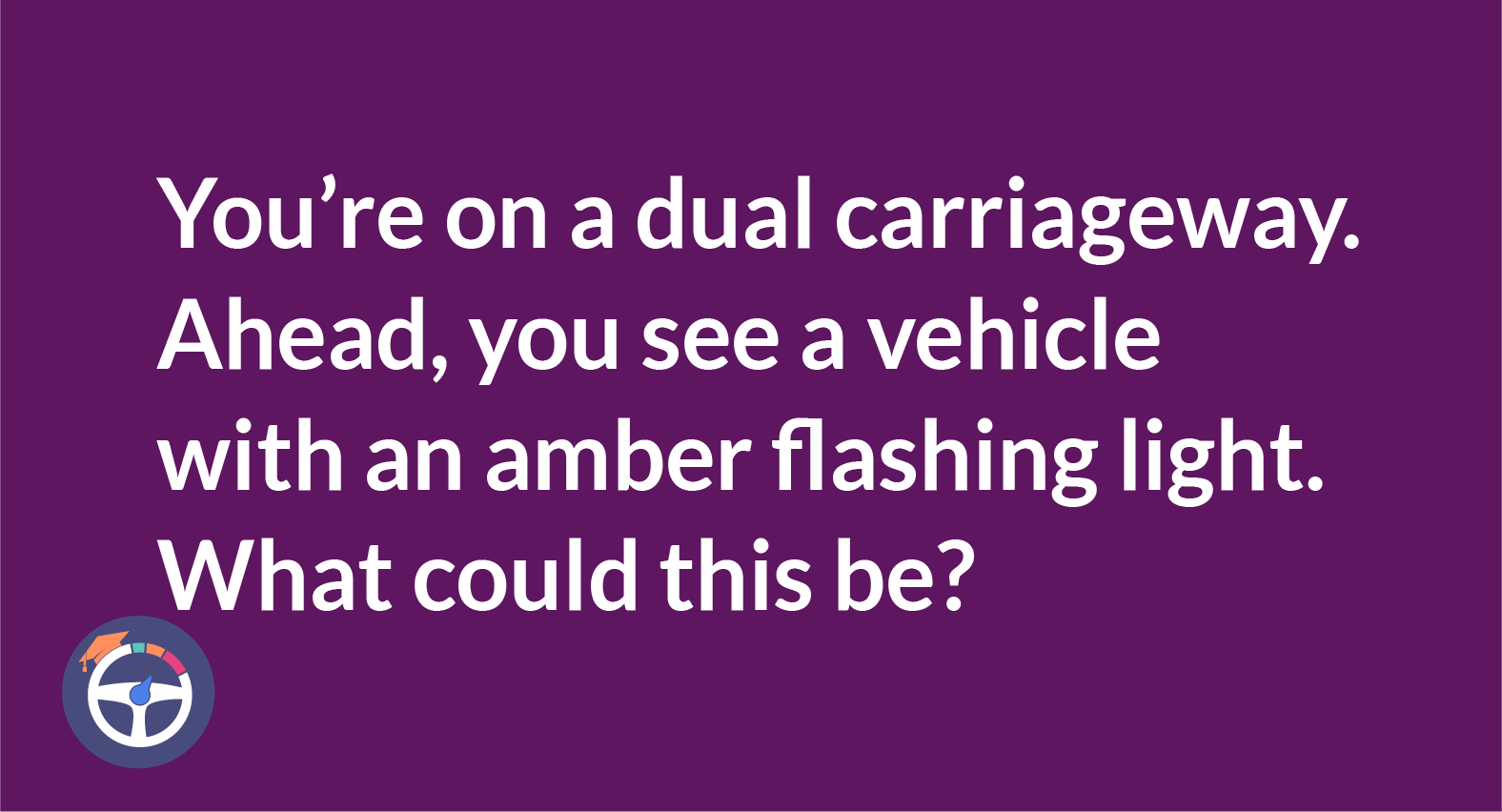What is a contraflow system | Your Guide to Contraflow Cycle
A contraflow system allows traffic to travel in the opposite direction to the normal flow, often during roadworks or lane closures. It helps maintain traffic movement but requires extra caution due to the proximity of oncoming vehicles. In cycling, Contraflow cycling allows cyclists to ride against traffic on one-way streets for safer and more direct routes.

Content
- What Is A Contraflow System?
- What Is A Contraflow System On Motorways?
- What's Found In A Motorway Contraflow System?
- How Should You Proceed In A Motorway Contraflow System?
- Contraflow Cycle Lanes
- Signs For A Contraflow Cycle Lane
- Contraflow Bus Lanes
- With-Flow Bus And Cycle Lanes
- Benefits Of Contraflow Cycle And Buses Lanes
- The Contraflow System In The UK Theory Test
- That's A Wrap!
- FAQ
- Can contraflow lanes be implemented on any type of road?
- How does the contraflow system impact speed limits on motorways?
- Are contraflow cycle lanes required to have physical barriers?
- What role do communication strategies play in contraflow systems?
- Why are law enforcement personnel deployed in contraflow systems?
What Is A Contraflow System?
Many of us already know what is a contraflow system. A contraflow system is a traffic management approach. It's deployed during emergencies or high-traffic scenarios. It optimizes road capacity and enhances evacuation efficiency. By reversing the usual direction of traffic flow, vehicles can move in the opposite direction. This occurs on designated lanes or roads. It minimizes congestion and facilitates the rapid evacuation of people from affected areas. Careful planning, coordination, and communication are crucial. They are necessary for the successful implementation of contraflow systems. It ensures the smooth flow of traffic and prioritizes public safety during critical situations.
What Is A Contraflow System On Motorways?
The contraflow system on motorways is a traffic management strategy. It temporarily reverses traffic flow to optimize road capacity and efficiency. Implemented during emergencies, lanes for one-way traffic switch for vehicles going the opposite way. This eases congestion, speeds evacuations, and maximizes existing road use.
What's Found In A Motorway Contraflow System?
A motorway contraflow system includes several key elements. It is designed to manage and control traffic during emergencies or high-traffic situations. These elements ensure the smooth and safe reversal of the traffic flow. Here are some components commonly found in a motorway contraflow system:
Reversible Lanes:
Contraflow systems designate specific lanes for temporary opposite-direction traffic. These lanes may be physically separated from the regular lanes by barriers or markings.
Temporary Barriers:
Physical barriers, like moveable concrete barriers or traffic cones, are used. They separate contraflow lanes from normal traffic flow. These barriers help prevent vehicles from crossing into the wrong lanes.
Law Enforcement Presence:
Police officers or other law enforcement personnel are often deployed. They manage traffic, enforce contraflow rules, and assist motorists. Their presence enhances safety and ensures compliance with the temporary traffic arrangements.
Communication Strategies:
Effective communication is critical. Public awareness campaigns are utilized. Radio announcements play a role. Digital message boards come into play. Their purpose is to inform motorists about the contraflow system. Changes in traffic patterns are highlighted. Alternative routes are communicated through these channels.
Entry and Exit Points:
Clearly marked entry and exit points guide motorists onto and off contraflow lanes. These points are strategically located to minimize confusion and maintain a smooth flow of traffic.
Emergency Services Access:
Provisions ensure emergency services access contraflow lanes. This includes clear routes for ambulances, fire trucks, and other emergency vehicles.
How Should You Proceed In A Motorway Contraflow System?
When driving in a contraflow system on a motorway, follow specific guidelines. This will ensure safety and smooth traffic flow. Consider these key actions:
Pay Attention to Signage: Obey all posted signs and electronic message boards. They provide critical information about contraflow lanes, entry points, exits, and other essential instructions.
Stay in Designated Lanes: Drive only in the lanes specified for the contraflow system. Do not cross over into lanes designated for oncoming traffic or regular flow.
Follow Speed Limits: Adhere to posted speed limits, which may be adjusted for the contraflow system. Adjust your speed accordingly and maintain a safe following distance.
Be Prepared for Changes: Contraflow systems can have dynamic conditions. Be prepared for sudden changes in traffic patterns, such as lane closures or shifts, and adjust your driving accordingly.
Use Indicators Appropriately: Signal your intentions early and clearly when changing lanes or merging. Be mindful of other motorists and maintain a cooperative driving approach.
Contraflow Cycle Lanes
Contraflow cycle lanes are paths for bicycles. They go opposite to nearby traffic on one-way streets. This boosts cyclist safety with clear signage, road markings, and barriers separating cyclists from cars. These lanes offer a direct and convenient route. Contraflow cycle lanes foster cycling integration as a sustainable urban transportation mode. Effective implementation involves careful planning, intersection design, and regulatory compliance. This creates a cyclist-friendly and interconnected urban environment.
Signs For A Contraflow Cycle Lane
Clear signage is crucial for informing road users about contraflow cycle lanes and ensuring safe traffic flow. Here are common signs for contraflow cycle lanes:
Cycle Lane Ahead Sign:
This triangular sign features a bicycle symbol and indicates that a contraflow cycle lane is approaching.
Cycle Lane:
This rectangular sign shows a white bicycle symbol on a blue background. Signaling the presence of a cycle lane. Additional directional arrows may be included to signify contraflow movement.
No Entry Except for Cycles:
This sign is often accompanied by a "No Entry" symbol. There's an exception for bicycles. It denotes that the street is one-way for motor vehicles. Contraflow cycling, however, is allowed.
Cycle Lane Starts:
A sign marks the beginning of a contraflow cycle lane. It usually features a white bicycle symbol on a blue background. An arrow indicates the direction of the cycle lane.
Cycle Lane Ends:
This sign signals the end of a contraflow cycle lane. It often features a white bicycle symbol on a blue background with an arrow pointing downward.
Cycle Lane Route Ahead:
An informational sign that indicates the route of the contraflow cycle lane ahead. It features a white bicycle symbol on a blue background with directional arrows.
Cycle Symbol Road Markings:
On the road surface, markings may depict a bicycle symbol. Directional arrows guide cyclists along the contraflow lane.
Use Cycle Lane:
This circular blue sign with a white bicycle symbol instructs cyclists to use the designated cycle lane.
No Motor Vehicles Allowed Except Bicycles:
This sign is often used with "No Entry" signs. It permits only bicycles to enter a contraflow cycle lane.
These signs and markings collaborate to convey the presence, direction, and rules of contraflow cycle lanes. Proper visibility and placement are crucial. They ensure that cyclists and motorists are well-informed, promoting safe navigation.
Contraflow Bus Lanes
In the urban jungle, contraflow bus lanes play a pivotal role in transforming public transportation dynamics. These lanes are strategically positioned in busy city centers. They enable buses to defy regular traffic flow, optimizing movement and reducing congestion. Contraflow bus lanes, marked by distinct signage and road markings, enhance efficiency. They provide commuters with faster, more reliable transit. This contributes to a greener and less congested urban environment.
With-Flow Bus And Cycle Lanes
With-flow bus and cycle lanes are strategically integrated into urban road networks. They align with the regular flow of traffic. This facilitates the movement of buses and cyclists in the same direction as other vehicles. These lanes contribute to the overall efficiency and safety of urban transit. Marked by clear signage and road markings, with-flow lanes provide designated spaces for buses and cyclists. This ensures a smoother coexistence with the general flow of traffic. The integration enhances the accessibility of public transit. It promotes sustainable commuting options. It fosters a more organized and coordinated urban mobility landscape.
Benefits Of Contraflow Cycle And Buses Lanes
Contraflow cycles and bus lanes bring numerous advantages to the urban transportation landscape. They create a more efficient and sustainable mode of transit.
Enhanced Traffic Flow: Contraflow lanes streamline the movement of cyclists and buses. They reduce congestion and promote a more efficient traffic flow in busy urban areas.
Improved Safety for Cyclists: These lanes provide a dedicated space for cyclists. It enhances their safety by allowing them to travel against the regular traffic flow.
Speedier Public Transit: Contraflow bus lanes expedite the movement of buses through urban centers. They reduce travel times for passengers, making public transit a faster and more reliable option.
Accessibility to Urban Areas: These lanes open up new routes and provide better access to city centers. They make urban areas more navigable for cyclists and improve the efficiency of public transportation.
The Contraflow System In The UK Theory Test
Here are potential questions that might appear in the theory test about contraflow systems:
- Identify the types of roads where contraflow bus or cycle lanes are commonly found.
- Familiarize yourself with the distinct visual characteristics of various contraflow signs. Also, get to know the features of with-flow signs.
- Explain the impact of a contraflow system on the speed limit when implemented on a motorway.
- Recognize the additional hazards that car drivers may encounter within a contraflow system.
If any of these concepts seem unclear. Consider engaging in additional revision before the theory test. A thorough review of our comprehensive guide on contraflow systems can provide a solid grasp of essential facts. Additionally, explore a compilation of theory test revision resources. It will help you prepare better.
That’s A Wrap!
Understanding the contraflow system is pivotal for safe and efficient driving. From emergency scenarios, these systems are multifaceted. Optimizing traffic on motorways is a key aspect. Facilitating urban cycling is also a crucial function. As you gear up for the theory test, focus on recognizing signs. Understand the rules thoroughly. Adapt to dynamic conditions effectively.
FAQ
1. Can contraflow lanes be implemented on any type of road?
Contraflow lanes are typically found on specific types of roads. They are commonly seen on motorways or busy urban streets where effective traffic management is necessary.
2. How does the contraflow system impact speed limits on motorways?
The contraflow system may result in changes to speed limits on motorways. It's important for drivers to be aware of any adjustments. It could be made for the temporary opposite-direction traffic flow.
3. Are contraflow cycle lanes required to have physical barriers?
Physical barriers in contraflow cycle lanes depend on the specific design. Not all contraflow cycle lanes incorporate physical separation from motor vehicle traffic.
4. What role do communication strategies play in contraflow systems?
Communication strategies play a crucial role. Public awareness campaigns and digital message boards are used to inform motorists about:
- contraflow systems
- traffic pattern changes
- alternative routes.
5. Why are law enforcement personnel deployed in contraflow systems?
Law enforcement personnel are deployed to manage traffic, enforce contraflow rules, and assist motorists. Their presence enhances safety and ensures compliance with temporary traffic arrangements.


